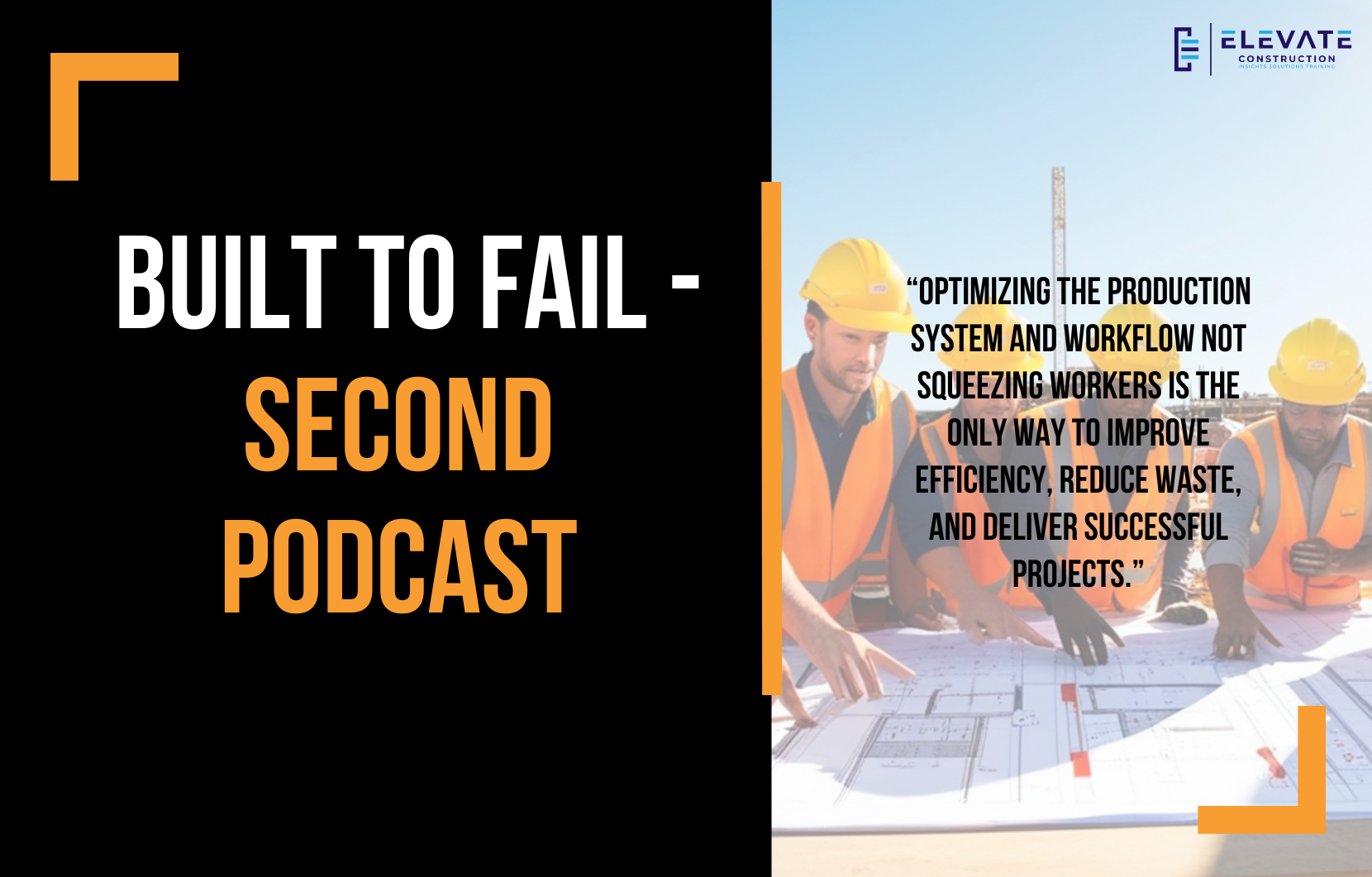Why Construction Projects Keep Struggling
In this blog, I continue my dive into Built to Fail by Todd R. Zabel, exploring why so many construction projects go over budget, miss deadlines, or fall short of expectations and what we can do differently.
Chapter two focuses on what Zabel calls “Era One,” the era of productivity. This period is defined by centralized planning, project controls, and the rise of bureaucracy essentially separating planning from doing. Charles Babbage, in the early 1800s, formalized the division of labor, which turned what used to be turnkey projects into a fragmented system with six to ten entities handling what a single contractor once managed. While specialization can increase efficiency, it often results in fragmentation, complex handoffs, and wasted time.
Frederick Taylor’s time studies and focus on piece work added another layer. The intent was to measure and improve worker efficiency, but in practice, it often led to squeezing workers rather than optimizing the process. Henry Gantt introduced bar charts to organize projects, yet these tools unintentionally reinforced the gap between planning and doing. Time waiting for work to be processed queue time became invisible, creating bottlenecks that slowed overall throughput.
Behavioral science was also misapplied. Early researchers sought to motivate workers for production gains rather than genuinely improving their experience or well-being. Zabel emphasizes the need for an infinite mindset, inspired by thought leaders like Simon Sinek, where organizations prioritize people and purpose, not just output.
The key insight here is a shift from focusing on individual worker productivity to focusing on the workflow and process. Even if some workers are slower, the system itself should be designed to flow efficiently, leveling work and reducing unnecessary waste. As Zabel points out, large construction companies often prioritize administration, accounting, and compliance over designing, making, and building laying the groundwork for Era Two, where bureaucracy intensifies.
This blog summarizes the lessons from Era One and sets the stage for understanding why our industry struggles and what it must change. Optimizing process, not people, is the key to building better, faster, and smarter.
Key Takeaway
The construction industry fails when focus shifts from doing the work to managing bureaucracy. Optimizing the production system and workflow not squeezing workers is the only way to improve efficiency, reduce waste, and deliver successful projects.
If you want to learn more we have:
-Takt Virtual Training: (Click here)
-Check out our Youtube channel for more info: (Click here)
-Listen to the Elevate Construction podcast: (Click here)
-Check out our training programs and certifications: (Click here)
-The Takt Book: (Click here)
Discover Jason’s Expertise:
Meet Jason Schroeder, the driving force behind Elevate Construction IST. As the company’s owner and principal consultant, he’s dedicated to taking construction to new heights. With a wealth of industry experience, he’s crafted the Field Engineer Boot Camp and Superintendent Boot Camp – intensive training programs engineered to cultivate top-tier leaders capable of steering their teams towards success. Jason’s vision? To expand his training initiatives across the nation, empowering construction firms to soar to unprecedented levels of excellence.
On we go

